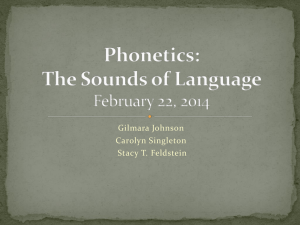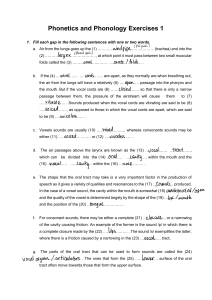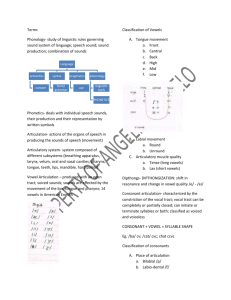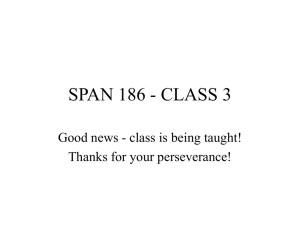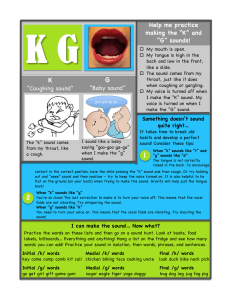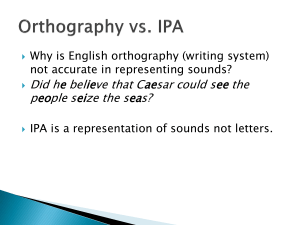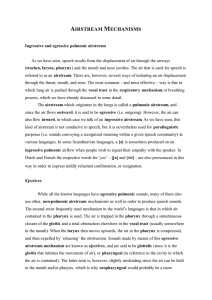ORGANS OF SPEECH & AIRSTREAM MECHANISM ANI SETYANINGSIH
advertisement
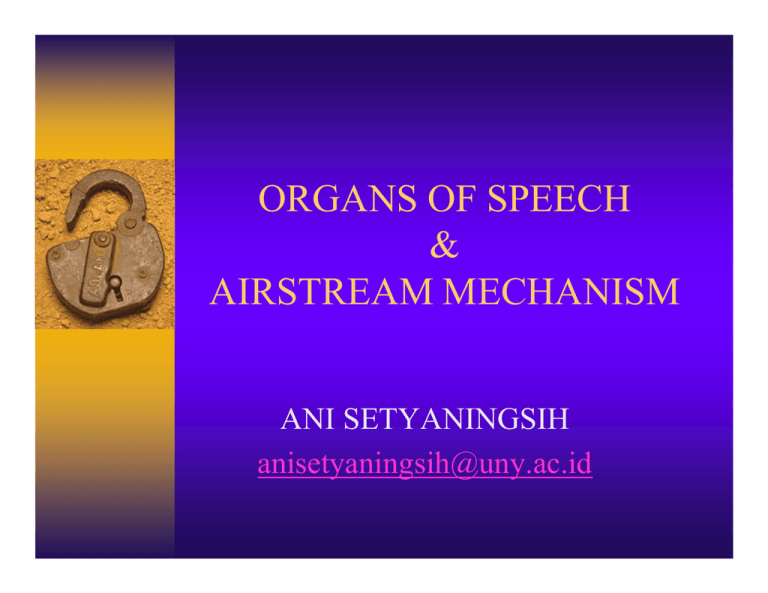
ORGANS OF SPEECH & AIRSTREAM MECHANISM ANI SETYANINGSIH anisetyaningsih@uny.ac.id HOW ARE SOUNDS PRODUCED?? * Speech sounds are produced by a moving the column of air in a resonating chamber – just like a musical instrument. * Different sounds are produced by varying the speed of the column of air, the size and shape of the resonating chamber, and by introducing various kinds of vibrations into the column. * This is why different musical instruments sound different. * This is also why different people sound different when they talk. THE SOUNDS PRODUCING SYSTEM THE SOUNDS PRODUCING SYSTEM lungs : set air in motion trachea : windpipe larynx : the sound source (where the vocal cords are) pharynx oral cavity nasal cavity Air goes from the lungs through the windpipe (trachea) and into the larynx → the air must pass between two small muscular folds, i.e. the VOCAL CORDS. The air passages above the larynx are known as the VOCAL TRACT. The VOCAL TRACT : ~ ORAL TRACT (within the mouth) ~ NASAL TRACT (within the nose) ARTICULATORS parts of the vocal tract that can be used to form sounds. * lips * teeth * Alveolar Ridge : the small protuberance behind the upper lip * Hard Palate : the front part of roof of the mouth →formed by a bony structure * Soft Palate (velum) : muscular flap at the back of the roof of the mouth * Uvula : small appendage hanging down at the lower end of the velum. * Pharynx : part of the vocal tract between the uvula and the larynx * Tongue: ~ Tip and Blade → most mobile parts ~ Body of the tongue ▲Front : behind the blade, lies underneath the hard palate ▲Center : partly beneath the hard palate and the soft palate ▲ Back : beneath the soft palate ▲ Root : opposite the back wall of the pharynx * Epligottis : attached to the lower part of the root of the tongue AIRSTREAM MECHANISM The PULMONIC EGRESSIVE ↓ ↓ ? ? AIRSTREAM MECHANISM VOICED & VOICELESS SOUNDS airstream from the lungs moves out through the trachea and the opening between the vocal cords (glottis) ~ Voiced: when the airstream forces its way through and caused the vocal cords (which aren’t apart) to vibrate e.g. /b, d, g, v, ð, dʒ, z, ʒ/ ~ Voiceless: when the air is not obstructed at the glottis, -since the vocal cords are apart- and passes freely into the supragottal cavities e.g. /p, t. k, f, θ, tʃ, s, ʃ, h/ VOICED & VOICELESS SOUNDS (CONT.) The formula: Voiced Voiceless (+ voice) (- voice) NASAL & ORAL SOUNDS Nasal Sounds: produced when the velum is lowered, so the air escapes not only through the mouth but also the nose e.g. /m, n, η/ Oral Sounds: produced when the velum is raised , so the air escapes only through the mouth e.g. /b, d, g,/ The formula: Nasal (+ nasal) Oral (- nasal)
